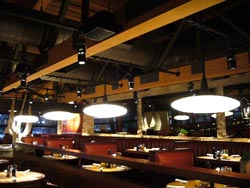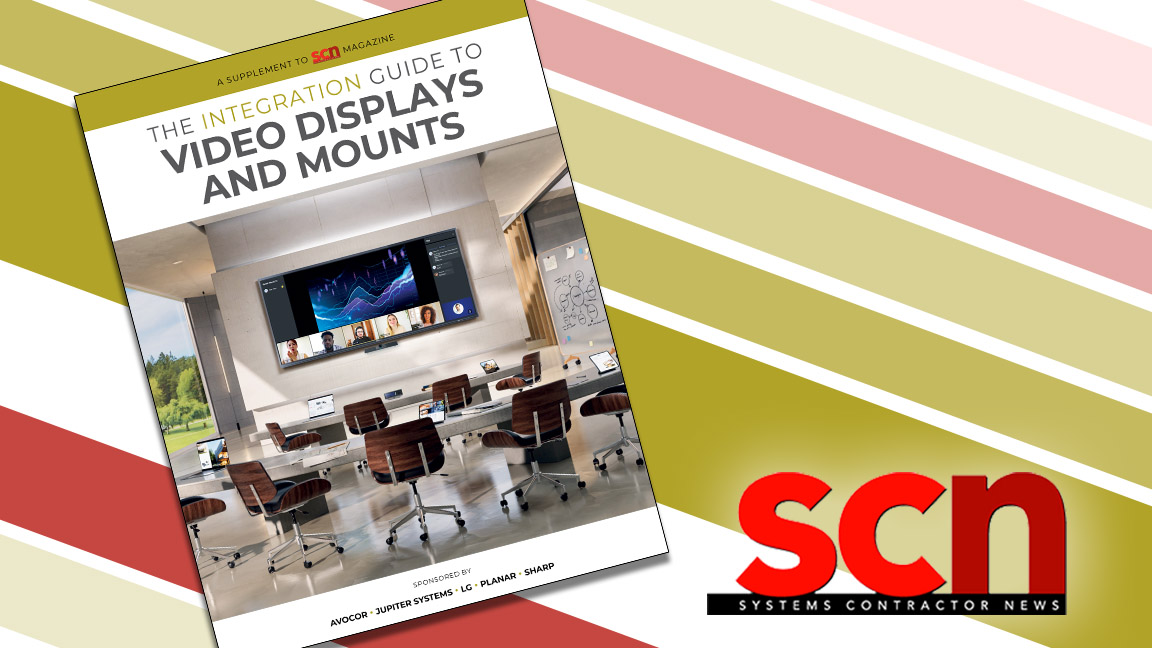Order Up!

- The Symetrix Integrator Series 760 zone mixer with ARC-2 controller was installed in several of the Houston's restaurants to deliver consistent, easily-operated, zoned audio throughout the facility.HOUSTON, TX-The Houston's restaurant chain prides itself on providing its patrons with a unique dining experience centered on a fresh selection of music, so they have a full-time, dedicated audio programmer on staff who hand picks every song, carefully considering its flavor and the segues between songs, as well as a live piano.
- Thus, it was especially frustrating when complaints started flowing into the head office that the sound systems at two of their Dallas locations were far worse than adequate. Enter Grammy-nominated studio engineer, AV contractor, and studio designer, Paul Dexter, who was called in to assess the situation.
- The old systems were based around analog rack mixers that had been set up to crudely balance each zone. Dexter worked out a new model centered on the Symetrix Zone Mix 760 that would give each restaurant consistent and excellent sound throughout and, when installed in other restaurants in the chain, consistent sound from restaurant to restaurant.
- While he did bring in new speakers and amps, if Dexter had stopped there, Houston's problems would have remained because the old system lacked zone control and zone processing. DSP units are a lot like cars in that the final sale often depends as much on the way it looks and feels to the user as it does on the power under the hood. "What sold Houston's on the Symetrix Zone Mix 760 was the Symetrix ARC-2 controller, which kills the controller of any other manufacturer," Dexter said. "They were blown away by how cool it looks!" With only three buttons and a simple display, the ARC-2 shields Houston's employees from the true complexity of the system. For each zone, they select a source and a volume-simple. One controller runs an entire restaurant.
- Dexter programmed the Zone Mix 760 with a Macintosh running Windows virtualization. "It was easy. I didn't even need time to learn it," he said. "We had been up all night installing the system and they were going to open for lunch in three hours. I did some routing, bypassed a few modules that weren't needed, and tweaked the compression, EQ, and filtering to provide nice, even coverage across the whole restaurant."
- The results bring Houston's sound system in line with the effort it expends bringing the right music to its patrons. "I went back a few days later for dinner with my wife," Dexter said. "We enjoyed a half hour of recorded music before they switched over to the piano. It used to be painfully obvious when they switched because the tone and volume of the piano was so different from everything else. But we didn't notice until a few songs in."
by Ryan Abeling
The recent sound system renovations at Houston's were accomplished in part with Tannoy's Di6 speakers. "Being a studio engineer, I have used Tannoy for years," said Paul Dexter. "The dual-concentric design was something that I wanted from any brand. They specialize in that, and these speakers sound wonderful. The Di6s are a bit bass-heavy, which is popular today, but with the processor, we just roll some of that off. Where a lot of people are using 'bass enhancers' to ADD low end at low volumes, I actually prefer to REDUCE it. The dual concentric design means that every seat of that table hears the same sound."
Dexter was familiar with Houston's before getting the job, so he used his knowledge to get the sound the restaurant was looking for. "I saw how they were concerned with acoustics," he said. "Even though they have an open kitchen, they were still applying acoustic panels in the best possible places to get the environment as quiet as they could without taking away from their environment. Since I had designed a new mastering studio for them to put together their playlists, I became hooked on how their 'brand' of music sounded in the studio. Then, when asked to design systems in their restaurants, I simply wanted to try to achieve as close to that studio sound as possible. My goal was to try to put a speaker at every table without it intruding on the design. I believe the coverage and clarity need to be precisely hand in hand."
A daily selection of the top stories for AV integrators, resellers and consultants. Sign up below.
The AVNetwork staff are storytellers focused on the professional audiovisual and technology industry. Their mission is to keep readers up-to-date on the latest AV/IT industry and product news, emerging trends, and inspiring installations.
